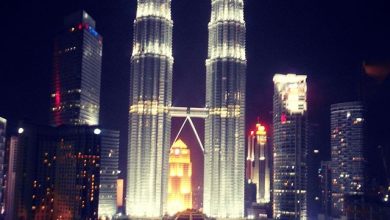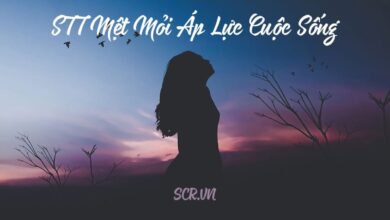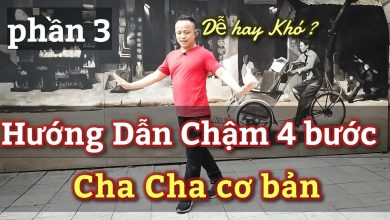15 best things to do in Ho Chi Minh City
It would be easy to roar around Ho Chi Minh City like one of the local motorcyclists – stopping at every corner, but never really seeing much – but Vietnam’s most populated city is worthy of some slow exploration.
From world-class museums and Vietnam’s tallest skyscrapers to fragrant, incense-filled temples and street food stalls that recall old Saigon, this former French colonial city is well worth at least three or four days of your time. These are the best things to do in Ho Chi Minh City.
The War Remnants Museum is unmissable © xuanhuongho / Getty Images
Table of Contents
1. War Remnants Museum
Best museum in Ho Chi Minh City
To understand the context of the war with the USA, and its devastating impact on Vietnamese civilians, this remarkable, deeply moving museum is an essential visit. Many atrocities documented here were well publicised, but rarely do Americans and Europeans hear the victims of military action tell their own stories. While some displays are one-sided, many of the most disturbing photographs illustrating atrocities are from US sources, including those from the My Lai massacre.
The museum primarily deals with the American War, but the French-colonial period and conflicts with China are also documented. US armoured vehicles, artillery pieces, bombs and infantry weapons are on display outside. One corner of the grounds is devoted to the notorious French and South Vietnamese prisons on Phu Quoc and Con Son islands. Artefacts include that most iconic of French appliances, the guillotine, and the notoriously inhumane ‘tiger cages’ used to house war prisoners. Allow at least a couple of hours for your visit.
The Jade Emperor located inside the Jade Emperor Pagoda © TRAN THI HAI YEN / Shutterstock
2. Jade Emperor Pagoda
Built in 1909 in honour of the supreme Taoist god (the Jade Emperor or King of Heaven, Ngoc Hoang), this is one of the most atmospheric temples in Ho Chi Minh City, stuffed with statues of phantasmal divinities and grotesque heroes. The pungent smoke of incense (huong) fills the air, obscuring the exquisite woodcarvings. Its roof is encrusted with elaborate tile work, and the temple’s statues, depicting characters from both Buddhist and Taoist lore, are made from reinforced papier mâché.
Inside, worshippers mass before the ineffable Jade Emperor, who presides – draped in luxurious robes and shrouded in a dense fug of incense smoke – over the main sanctuary. He is flanked by his guardians, the Four Big Diamonds (Tu Dai Kim Cuong), so named because they are said to be as hard as diamonds.
Trying street food in Ho Chi Minh City is a quintessential experience © James Pham / Lonely Planet
3. Eat street food in District 4
Best for foodies
Just south of the glitzy Dong Khoi area, it’s a short walk over the Ben Nghe Channel to working-class District 4. Here the ambience is far more Saigonese, with little or no concession to tourism, and narrow lanes, street markets and shabby concrete apartment blocks. Order a coffee here and expect a drip-fed Vietnamese coffee that resembles engine oil rather than a frothy cappuccino.
District 4 is the best area in the city to sample authentic street food, with dozens of places on Ɖ Vinh Khanh. For great seafood at affordable prices, try Oc Dao 2. HCMC is a city in love with snails, and District 4 is something of a magnet for snail eaters, with many fine places on the buzzing alley Lo J KTT, including Oc Po, which is always packed.
4. Giac Lam Pagoda
Believed to be the oldest temple in HCMC (1744), Giac Lam is a fantastically atmospheric place set in peaceful, garden-like grounds. The Chinese characters that constitute the temple’s name (覚林寺) mean ‘Feel the Woods Temple’ and the looming Bodhi tree (a native fig tree, sacred to Buddhists) in the front garden was the gift of a Sri Lankan monk in 1953. Prayers are held daily from 4am to 5am, 11am to noon, 4pm to 5pm and 7pm to 9pm.
Next to the tree stands a gleaming white statue of compassionate Quan The Am Bo Tat (also known as the Goddess of Mercy) on a lotus blossom, a symbol of purity. As at many Vietnamese Buddhist temples, aspects of both Taoism and Confucianism can be found here. For the sick and elderly, the pagoda is a minor pilgrimage sight, as it contains a bronze bell that, when rung, is believed to answer the prayers posted by petitioners. About 3km from Cholon, Giac Lam Pagoda is best reached by taxi or xe om (motorbike taxi).
Read more: Best day trips from Ho Chi Minh City
Pasteur Street Brewing Company is among a slew of good craft beer bars in Ho Chi Min City ©James Pham/Lonely Planet
5. Test out the craft beer scene
Best bars in Ho Chi Minh City
Happening HCMC is concentrated around the Dong Khoi area, with everything from dives to designer bars open until 1am. Pham Ngu Lao stays open later, and PNL’s Ð Bui Vien is a pedestrian-only street from 7pm to 2am on Saturdays and Sundays. Dance clubs usually kick off after 10pm. Amongst all the late night action is a blossoming craft beer scene, including the following bars.
Heart of Darkness
This premier craft brewery has an always-interesting selection of innovative beers on tap. The selection varies as the Heart of Darkness brewers are always trying something, but the Dream Alone pale ale and Sacred Fire golden ale are great drops.
BiaCraft
With almost 40 taps, BiaCraft is an essential destination for thirsty souls. Complementing its own creations are ales and ciders from craft breweries in Saigon and Hanoi; it’s possible to take out freshly sealed cans of all available beers. Combine a tasting paddle with probably the city’s best bar food, with quirky offerings like drunken baby potatoes and Nashville hot quail.
Rogue Saigon
Live music and Vietnamese craft beers combine on Rogue’s rooftop terrace in a gritty building on the riverside edge of District 1. You’ll find good beers such as Lac Brewing’s Devil’s Lake IPA, and music with an acoustic, blues or rock vibe. There are DJ sessions on Saturday and also jams and quiz nights.
Central Post Office, pretty enough to be on a postcard © HuyThoai / Getty Images
6. Architecture
Ho Chi Minh City is littered with faded, century-old buildings from when it was still under French colonial rule. Scores of heritage buildings are scattered throughout the city, mainly in Districts 1 and 3. Here’s some of the most historically intriguing.
People’s Committee Building
One of the city’s most prominent landmarks is home to the Ho Chi Minh City People’s Committee. Built between 1901 and 1908, the former Hôtel de Ville decorates the northwestern end of ÐL Nguyen Hue, but unfortunately the ornate interior is not open to the public.
Central Post Office
The city’s landmark French-era post office is a period classic, designed by Marie-Alfred Foulhoux (though often credited to Gustave Eiffel) and built between 1886 and 1891. Painted on the walls of its grand concourse are fascinating historical maps of South Vietnam, Saigon and Cholon, while a mosaic of Ho Chi Minh takes pride of place at the end of its barrel-vaulted hall. Note the magnificent tiled floor of the interior and the copious green-painted wrought iron.
Municipal Theatre (Saigon Opera House)
Gracing the intersection of Ð Dong Khoi and ÐL Le Loi, this grand colonial edifice with a sweeping staircase was built in 1897 and is one of the city’s most recognisable buildings. Officially known as the Municipal Theatre, the Opera House captures the flamboyance of France’s belle époque. Performances range from ballet and opera to modern dance and musicals.
Dong Khoi is the well-heeled area of Ho Chi Minh City in Vietnam © ShevchenkoAndrey / Getty Images
7. Explore Dong Khoi Area
This well-heeled area, immediately west of the Saigon River, packages the heart of old Saigon into a swish enclave of designer shops and skyscrapers. Slicing from the river to august Notre Dame Cathedral via the Opera House (Municipal Theatre), ritzy Ð Dong Khoi is the main shopping strip and lends its name to the encircling civic centre and central business district.
Yet it’s the wide, tree-lined boulevards of ÐL Le Loi and ÐL Nguyen Hue, perpetually swarming with motorbikes, that leave more of an impression – not least if you’ve survived crossing them on foot. It’s in these grand thoroughfares that French-colonial elegance and urban modernity fashion an alluring concoction.
Read more: Top 20 free things to do in Ho Chi Minh City
The red brick exterior of Notre Dame Cathedral in Ho Chi Min City was imported from Toulouse © Efired / Shutterstock
8. Notre Dame Cathedral
Built between 1877 and 1883, Notre Dame Cathedral enlivens the heart of Ho Chi Minh City’s government quarter, facing Ð Dong Khoi. A red-brick, neo-Romanesque church, it has twin bell towers that are both topped with spires and crosses that reach 60m. This Catholic cathedral, named after the Virgin Mary, includes some lovely stained-glass windows and interior walls inlaid with devotional tablets. Its red bricks were imported from Toulouse, France.
The History Museum shares an entrance with the Botanical Gardens © James Pham / Lonely Planet
9. History Museum
Built in 1929, this notable Sino-French museum houses a rewarding collection of artefacts illustrating the evolution of the cultures of Vietnam, from the Bronze Age Dong Son civilisation (which emerged in 2000 BCE) and the Funan civilisation (1st to 6th centuries CE) to the Cham, Khmer and Vietnamese. Highlights include valuable relics taken from Cambodia’s Angkor Wat and a fine collection of Buddha statues. There’s good English information.
There’s also a perfectly preserved mummy of a local woman who died in 1869, excavated from Xom Cai in District 5; and some exquisite stylised mother-of-pearl Chinese characters inlaid into panels. It’s located beside the Botanical Gardens.
10. Botanical Gardens
One of the first projects undertaken by the French after establishing Cochin-China as a colony was founding these fantastic, lush gardens. Once one of the finest such gardens in Asia, they’re very agreeable for strolling beneath giant tropical trees. Skip the miserable zoo though.
Traffic around Cholon is also part of the experience © Richie Chan / Shutterstock
11. Cholon (Chinatown)
Rummage through Cholon (District 5) and lift the lid on a treasure trove of historic temples and Chinese flavours. Ho Chi Minh City’s Chinatown is less Chinese than it once was, largely due to the 1978–79 anti-capitalist and anti-Chinese chiến dịch, when many ethnic Chinese fled the country, taking with them their money and entrepreneurial skills.
A lot of those refugees have since returned (with foreign passports) to explore investment possibilities. Full-form written Chinese characters (as opposed to the simplified system used in mainland China) decorate shopfronts and temples in abundance, adding to the sensation that you have strayed into a forgotten corner of China.
Cholon means ‘big market’ and during the American War it was home to a thriving black market. Like much of HCMC, Cholon’s historic shopfronts are swiftly disappearing under advertising hoardings or succumbing to developers’ bulldozers, but some traditional architecture survives and an atmospheric strip of traditional herb shops thrives between Ð Luong Nhu Hoc and Ð Trieu Quang Phuc, providing both a visual and an olfactory reminder of the old Chinese city.
The Fine Arts Museum of Ho Chi Minh City is a must for art lovers © ngoc tran / Shutterstock
12. Fine Arts Museum
With its airy corridors and verandas, this elegant 1929 colonial-era, yellow-and-white building is stuffed with period details; it is exuberantly tiled throughout and home to some fine (albeit deteriorated) stained glass, as well as one of Saigon’s oldest lifts. Hung from the walls is an impressive selection of art, including thoughtful pieces from the modern period. As well as contemporary art, much of it (unsurprisingly) inspired by war, the museum displays pieces dating back to the 4th century.
These include elegant Funan-era sculptures of Vishnu, the Buddha and other revered figures (carved in both wood and stone), and Cham art dating from the 7th century to the 14th century. More statuary is scattered around the grounds and in the central courtyard (accessed from the rear of the building). There’s a selection of lovely prints for sale (from 150,000d) at the shop. Building No 2 alongside hosts lesser-known works and stages exhibitions.
The Reunification Palace is an enormously important sight for history buffs © Quang nguyen vinh / Shutterstock
13. Reunification Palace
Surrounded by royal palm trees, the dissonant 1960s architecture of this landmark government building and the eerie ambience of its deserted halls make it an intriguing spectacle. The first Communist tanks to arrive in Saigon rumbled here on 30 April 1975 and it’s as if time has stood still since then. The building is deeply associated with the fall of the city in 1975, yet it’s the kitsch detailing and period motifs that steal the show. It’s also known as the Independence Palace.
The ground floor is arranged with meeting rooms, while upstairs is a grand set of reception rooms, used for welcoming foreign and national dignitaries. In the back of the structure are the president’s living quarters; test out the model boats, horse tails and severed elephants’ feet. Perhaps most fascinating of all is the basement with its telecommunications centre, war room and warren of tunnels, where hulking old fans chop the air and ancient radio transmitters sit impassively. Towards the end are rooms where videos appraise the palace and its history in Vietnamese, English, French, Chinese and Japanese. The national anthem is played at the end of the tape and you are expected to stand up – it would be rude not to.
14. Rooftop bars
Best thing to do at night
Enjoy Ho Chi Minh City’s frenetic energy from a barstool high above the chaos below. Saigon Saigon Bar in the historic Caravelle Hotel was a favourite hangout of wartime journalists who would report from the ninth storey vantage point, cold beer in hand. Today, that same beer with the same great views is available as The Caravelle Terrace Draft.
For cocktails that are equally artsy as alcoholic, Shri Restaurant & Lounge tops the list. Located 23 floors up, sip on innovative cocktails inspired by various neighbourhoods like the Ben Thanh featuring lychee and ginger found in the city’s best-known market or the Thao Cam Vien with notes of cucumber and elderflower, inspired by the botanical gardens.
The views are as good as the coffee at Café Eon up the Bitexco Financial Tower © James Pham / Lonely Planet
15. Skyscraper observation towers
From the street level, Ho Chi Minh City seems incredibly chaotic, but there’s a quiet beauty to the city when experienced from above the fray. A number of skyscrapers have observation towers (or bars) which offer views of the city’s tree-lined boulevards and the snaking Saigon River.
Bitexco Financial Tower
From the 68-storey Bitexco Financial Tower – or, indeed, its chic EON Heli Bar on the 52nd floor – visitors can sip on a coffee whilst watching the world go by.
Landmark 81
At 81 stories high, the Tetris-like Landmark 81 is Vietnam’s tallest building. Its Blank Lounge, some 76 floors up, is where they share the views of the sprawling metropolis with the public.
Introducing Vietnam





